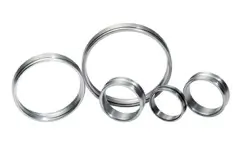Bearing noise analysis and noise reduction methods
Introduction
Bearings play a critical role in various machinery and equipment, providing support and reducing friction between moving parts. However, one common issue that arises with bearings is noise. Excessive noise can not only be annoying but also indicative of potential problems or failures. Therefore, it is essential to analyze bearing noise and implement effective noise reduction methods to ensure optimal performance and longevity.
Bearing noise analysis
Before diving into noise reduction methods, it is crucial to understand the various factors contributing to bearing noise. The following are some common causes of bearing noise:
1. Insufficient lubrication: Inadequate lubrication can lead to increased friction and wear, resulting in higher noise levels.
2. Contaminants: Foreign particles, such as dirt or dust, can enter the bearing and disrupt smooth operation, leading to noise.
3. Misalignment: If the bearing is not properly aligned with the shaft and housing, it can cause irregular motion and generate noise.
4. Damaged or worn-out bearings: Over time, bearings can suffer from wear and tear, leading to noise due to increased friction and vibration.
Noise reduction methods
To address bearing noise and improve overall performance, several noise reduction methods can be employed:
1. Lubrication: Ensuring proper lubrication is vital for reducing noise caused by friction. Using the correct type and amount of lubricant can significantly minimize noise levels.
2. Sealing: Implementing effective sealing mechanisms can prevent contaminants from entering the bearing, reducing noise associated with foreign particle-induced disruptions.
3. Alignment: Careful alignment of the shaft and housing with the bearing can help eliminate noise caused by misalignment. This can be achieved by following manufacturer specifications and using alignment tools.
4. Replacement: If bearings are damaged or worn-out, replacing them with high-quality, properly sized bearings can eliminate noise and restore optimal performance.
5. Noise isolation: In some cases, employing vibration-damping materials or isolating the bearing from other components can effectively reduce noise levels.
Conclusion
Bearing noise can be a significant concern in machinery and equipment. By analyzing the various factors contributing to noise and implementing appropriate noise reduction methods, manufacturers and operators can achieve quieter operation and improved overall performance. Regular maintenance and monitoring are also crucial for detecting and addressing any potential noise-related issues promptly. With proper care and attention, bearing noise can be minimized, ensuring smooth and reliable operation for extended periods.
.webp)
